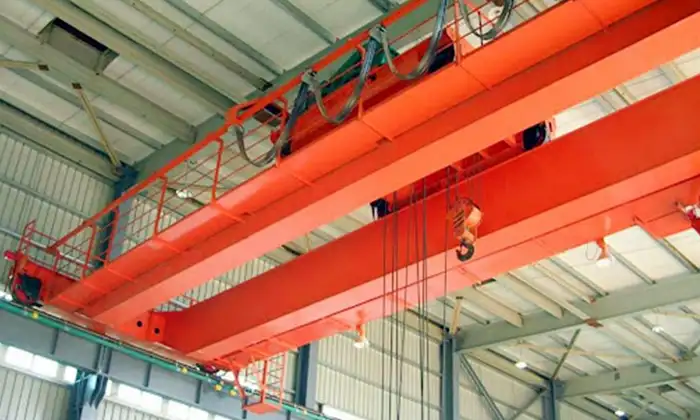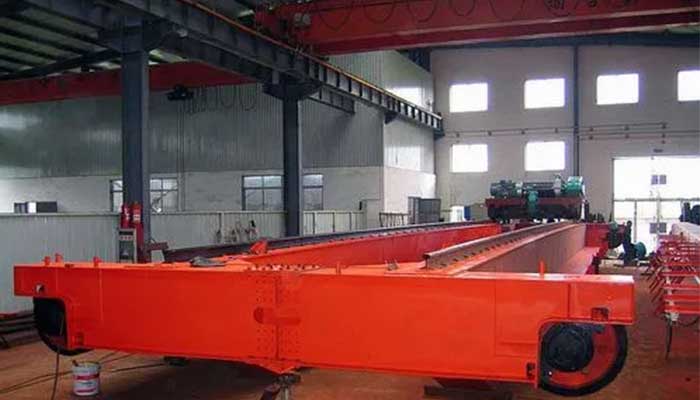Select Overhead Crane for Your Projects: Rental or Constructed ?
Tailoring Crane Solutions: A Comprehensive Guide to Selecting Overhead Cranes for Projects
Understanding Rental and Leasing Options
In the dynamic landscape of construction and industrial projects, the need for overhead cranes is a common occurrence. Whether you're embarking on a short-term endeavor, managing seasonal demands, or seeking cost-effective solutions, the choice between renting or leasing overhead cranes can significantly impact the success of your project.
Double girder overhead crane customized for your special application
Benefits of Renting Overhead Cranes
- Flexibility: Overhead crane rental provides unparalleled flexibility, making it an ideal choice for short-term projects with varying lifting needs. This flexibility allows you to adapt to changing project requirements without the long-term commitment associated with purchasing.
- Cost Savings: One of the most compelling advantages of renting is the immediate cost savings. By avoiding significant upfront costs, businesses can allocate resources more efficiently, especially when faced with budget constraints or unpredictable project durations.
- Maintenance: Rental agreements often include maintenance and repair services. This means that the responsibility of keeping the crane in optimal condition rests with the rental provider, alleviating a significant burden for the renting party.
- 4. Access to Latest Technology: Staying competitive in the industry requires access to cutting-edge technology. Renting overhead cranes allows you to utilize the latest advancements without the financial commitment of ownership.
Considerations for Rental
While the benefits of renting are clear, it's essential to consider potential limitations:
- Customization Limitations: Rented cranes may have limitations in terms of customization. If your project requires highly specialized features, purchasing or constructing a custom crane might be a more suitable option.
- Long-Term Cost: For projects with extended durations, the cumulative rental costs might surpass the upfront cost of purchasing a crane. Carefully assess the long-term financial implications to make an informed decision.
The decision to rent an overhead crane is not universal; it depends on the unique demands of your project. In Part 2, we will explore the advantages and considerations when constructing new overhead cranes, providing insights into scenarios where this option becomes the most viable choice. Stay tuned as we delve deeper into the world of overhead crane solutions tailored to your project needs.
Constructing New Overhead Cranes
Welcome back to our comprehensive guide on selecting overhead cranes for projects. In this segment, we delve into the advantages and considerations of constructing new overhead cranes. This option becomes particularly pertinent when your project demands a bespoke lifting solution that goes beyond the capabilities of standard rental options.
Overhead crane underconstruction
Advantages of New Overhead Cranes
- Latest Technology: Constructing a new overhead crane allows you to integrate the latest technological advancements into your lifting operations. This ensures that your project benefits from state-of-the-art features and efficiency, keeping you at the forefront of industry standards.
- Reliability: New cranes come with warranties and a higher level of reliability. This is especially crucial for projects where downtime can lead to substantial financial losses. The peace of mind that comes with a reliable crane is a significant advantage for critical lifting operations.
- Customization: One of the primary advantages of constructing a new crane is the ability to customize it according to your project's specific requirements. Whether it's adjusting the lifting capacity, span, or control system, a custom-built crane ensures that it perfectly aligns with your unique needs.
- 4. Niche Projects: Certain projects demand specialized lifting solutions that may not be readily available in standard rental options. Constructing a new crane allows you to tailor the equipment to meet the niche requirements of your project, ensuring optimal performance and safety.
Considerations for Construction
As promising as the advantages are, constructing a new overhead crane comes with its own set of considerations:
- Upfront Costs: One of the most significant hurdles is the substantial upfront costs associated with the construction and installation of a new crane. It's crucial to evaluate your budget constraints and weigh them against the long-term benefits of ownership.
- Maintenance Responsibility: Unlike rented cranes with maintenance included in the agreement, the owner is solely responsible for the maintenance, repairs, and associated costs of a newly constructed crane. This requires a proactive approach to ensure the crane's longevity and operational efficiency.
Scenarios for Exclusive Construction
Exclusive construction of overhead cranes becomes the optimal choice in certain scenarios:
- Specialized Projects: For projects with unique lifting needs or those operating in specialized industries, a custom-built crane ensures that the equipment is tailored precisely to the project's demands.
- Permanent Installation: When the crane is intended for permanent use within a facility, construction becomes a more practical and cost-effective solution compared to long-term rentals.
Choosing Used Overhead Cranes
Welcome to the third installment of our guide on selecting overhead cranes for your projects. In this segment, we shift our focus to the advantages of choosing used overhead cranes. This option becomes particularly attractive when a lower initial investment is a priority, and immediate availability is crucial for the success of your project.
Advantages of Used Overhead Cranes
- Lower Initial Investment: One of the most compelling reasons to opt for a used overhead crane is the significantly lower initial investment. This cost-effectiveness allows you to allocate resources to other aspects of your project while still benefitting from reliable lifting equipment.
- Immediate Availability: Used overhead cranes are readily available in the market, allowing you to put them to use promptly. This quick availability is advantageous, especially in situations where project timelines are tight, and delays could have detrimental effects.
While the advantages are evident, it's essential to consider certain factors when choosing used overhead cranes:
Considerations for Used Cranes
- Wear and Tear: Used cranes may exhibit wear and tear based on their previous usage. It's crucial to conduct a thorough inspection to assess the overall condition of the crane and identify any potential maintenance or repair needs.
- Limited Customization: Unlike newly constructed cranes, used cranes may have limitations regarding customization. While they offer immediate utility, modifications to meet specific project requirements might be restricted.
Suitability for Rental
Choosing used overhead cranes is especially suitable in scenarios where:
- Modular Designs: Cranes with modular designs, even if used, are often more suitable for rental. Their adaptable nature allows for easy transportation and installation in various project environments.
- Temporary Installation: If your project requires a crane for temporary use, choosing a used crane with features conducive to temporary installations can be a cost-effective and practical solution.
- Easy Dismantling: Used cranes that can be easily dismantled and moved between projects are more suitable for rental. This provides flexibility for different job sites without compromising efficiency.
Wrap It Up: Tailoring Crane Solutions to Project Needs
As we wrap up our comprehensive guide on selecting overhead cranes for your projects, it's essential to emphasize the critical aspect of tailoring crane solutions to meet the unique needs of each endeavor.
The Decision-Making Process
The decision-making process involves a careful evaluation of various factors, including project duration, budget constraints, customization needs, and the nature of the lifting requirements. Let's recap the key considerations for each option:
Renting Overhead Cranes:
- Ideal for short-term projects or those with varying lifting needs.
- Offers cost savings and maintenance convenience.
- Access to the latest technology without long-term commitments.
Constructing New Overhead Cranes:
- Incorporates the latest technology and offers a high level of reliability.
- Provides customization for project-specific requirements.
- Suitable for specialized projects and permanent installations.
Choosing Used Overhead Cranes:
- More budget-friendly upfront with immediate availability.
- Suitable for scenarios where a lower initial investment is a priority.
- Considerations include wear and tear and limited customization.
Tailoring Crane Solutions:
- Consider the unique demands of your project.
- Modular designs and easy dismantling are conducive to rental.
- Construction of a new crane is optimal for exclusive, specialized needs.
The optimal choice – whether to rent, lease, construct, or purchase a new or used overhead crane – ultimately depends on the specific project requirements and the long-term goals of your business. By carefully considering the outlined factors, you can tailor crane solutions that align with the unique needs of each project.
Choosing cranes with designs conducive to rental is essential for maximizing flexibility in various projects, especially when project requirements are subject to change. However, in exclusive cases where specific requirements demand it, the construction of a new crane becomes the optimal solution. This ensures that the equipment is precisely tailored to the project's needs, offering unparalleled efficiency and reliability.
We hope this comprehensive guide has equipped you with the insights needed to make informed decisions about overhead crane selection. For further assistance or inquiries, feel free to reach out. Here's to the success of your projects and the efficient lifting solutions that power them!




